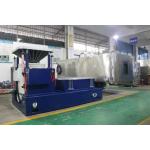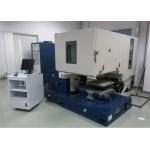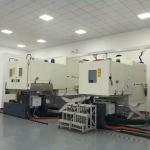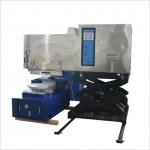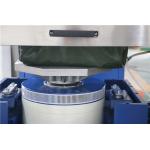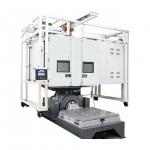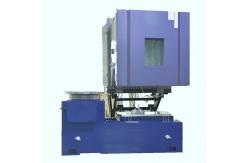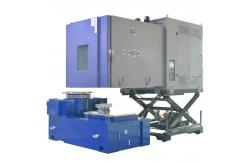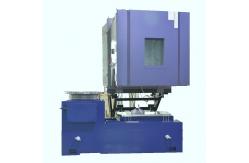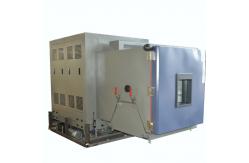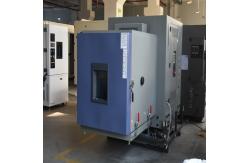In the realm of product testing, ensuring the reliability and
durability of products under various environmental and mechanical
stressors is of utmost importance. The Vertical and Horizontal
Vibration Test System integrated with a Temperature Humidity Test
Chamber emerges as a powerful and versatile solution, catering to a
wide range of industries. This advanced testing system allows for
the simulation of complex real-world conditions, providing valuable
insights into how products will perform in actual use scenarios. This combined testing system is designed to subject products to a
combination of vertical and horizontal vibrations, along with
controlled temperature and humidity variations. It serves
industries such as electronics, aerospace, automotive, and consumer
goods, among others. The primary purpose is to evaluate the
performance, integrity, and durability of products when exposed to
these simultaneous stress factors. By replicating the vibrations
and environmental conditions that products may encounter during
transportation, storage, or normal operation, manufacturers can
identify potential weaknesses, improve product designs, and ensure
that their products meet or exceed quality and safety standards. - Dual-Axis Vibration Capability
- The system is capable of generating both vertical and horizontal
vibrations independently or simultaneously. This dual-axis
functionality is crucial as it mimics the complex vibration
patterns that products experience in real-world situations. For
example, in transportation, products may be subjected to vibrations
from the road surface in both vertical and horizontal directions.
By testing in both axes, manufacturers can gain a more
comprehensive understanding of how their products will respond to
these forces.
- The vibration frequencies can be precisely controlled, typically
ranging from a low 1 Hz to a high 2000 Hz. This wide range allows
for the simulation of different types of vibrations, from the
gentle rumbling of a moving vehicle to the high-frequency
vibrations caused by machinery. The vibration amplitudes are also
adjustable, enabling the reproduction of various levels of
intensity, from minor vibrations to severe shocks.
- Customizable Vibration Profiles
- Operators have the flexibility to create custom vibration profiles
tailored to specific test requirements. These profiles can include
continuous vibrations, intermittent shocks, or complex sequences
that replicate real-world scenarios. For instance, a profile can be
designed to simulate the vibrations experienced during a long-haul
flight, with periods of turbulence and smooth flight, or the
vibrations during a rough off-road journey. The ability to
customize these profiles ensures that the testing accurately
reflects the actual conditions that products will face.
- High Payload Capacity
- The vibration test system is built to handle a wide range of
product sizes and weights. It typically has a high payload
capacity, capable of supporting products weighing several hundred
kilograms or even tons, depending on the model. This allows for the
testing of large and heavy components, such as industrial machinery
parts, aerospace equipment, and automotive assemblies.
- Wide Temperature and Humidity Range
- The temperature humidity test chamber offers a broad range of
temperature and humidity settings. The temperature can typically be
adjusted from as low as -40°C to as high as +80°C, while the
relative humidity can be controlled from 10% to 95%. This wide
range enables the simulation of diverse environmental conditions,
from the freezing cold of polar regions to the sweltering heat and
high humidity of tropical climates.
- The temperature and humidity control is highly accurate, with an
error margin of within ±0.5°C for temperature and ±3% for humidity.
This precision ensures that the test conditions closely replicate
the real-world environment, providing reliable and consistent test
results.
- Fast Temperature and Humidity Transitions
- The chamber is capable of rapid temperature and humidity
transitions, which is essential for simulating sudden environmental
changes. For example, a product may experience a significant
temperature drop when moved from a warm indoor environment to a
cold outdoor setting. The fast transition times, typically up to
5°C/min for temperature and 5%/min for humidity, allow for the
efficient testing of products' ability to withstand these abrupt
changes.
- Large Test Volume
|
